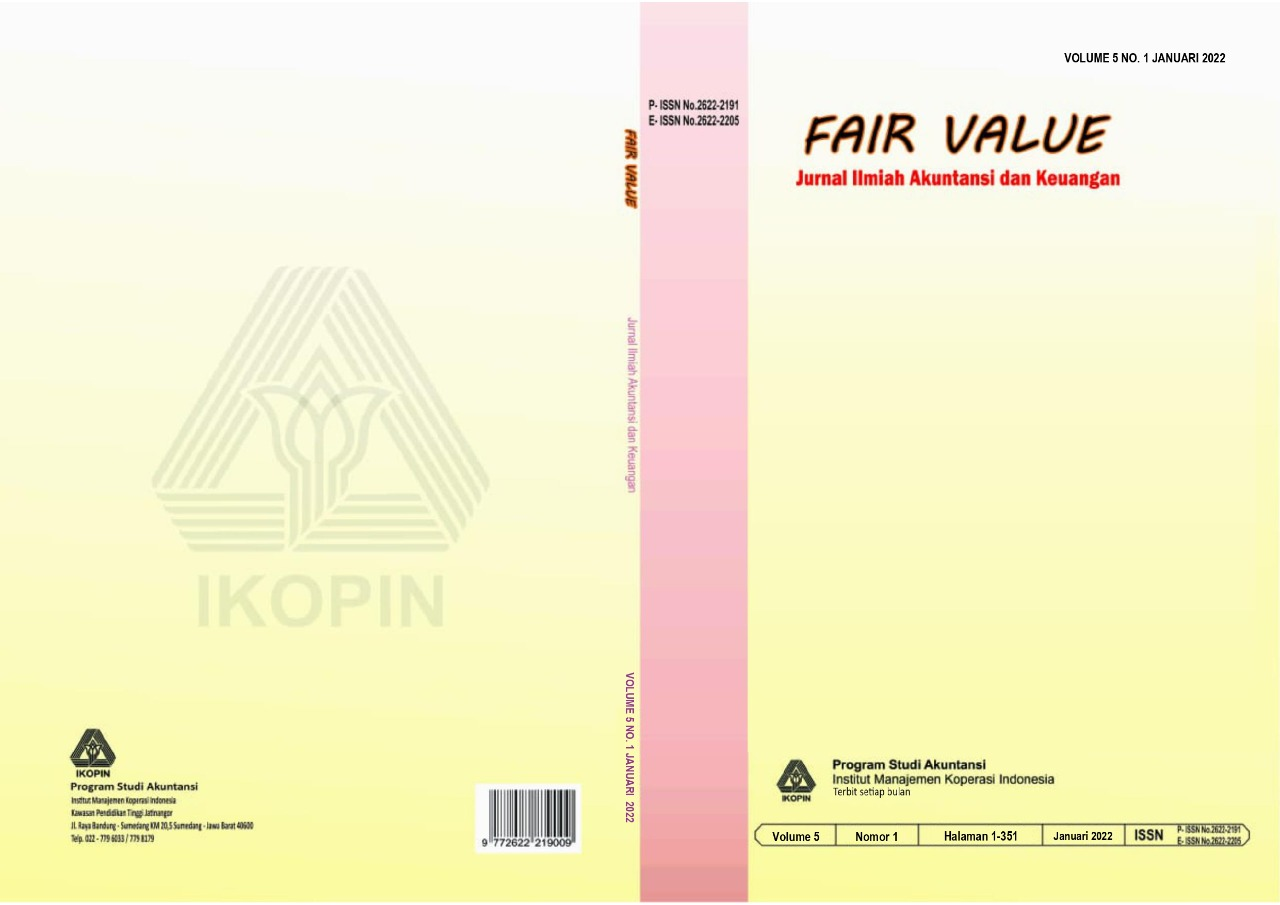Pengaruh kualitas pelayanan terhadap tingkat permohonan pinjaman kredit di bank bjb KCP Kopo Sayati Kab Bandung
Main Article Content
Abstract
The purpose of this study was to determine the magnitude of the influence of service quality on customer satisfaction by using five dimensions of service quality, namely tangible (physical evidence), empathy (empathy), reliability (reliability), responsiveness (responsiveness), and assurance (guarantee) at the Bank. bjb Kcp Kopo Sayati, Bandung Regency. The research population is all customers who apply for credit loans at Bank bjb Kcp Kopo Sayati Kab Bandung in the 2021 period, where the population is 306 customers while the sample determined using the reference calculation of the Slovin formula is 75.4 respondents who are rounded up to 75 respondents to answer the statement on the distributed questionnaire. Then statistical tests (validity test, correlation coefficient test, determination coefficient test and hypothesis test) were carried out using SPSS V.26. the results of data analysis obtained t_count of 28.224 > t_table of 1.993, so that the hypothesis test on the variable x Service Quality has a very positive influence on the level of customer satisfaction. From the results of SPSS output obtained R square of 0.916 or 91.6%. This shows that customer satisfaction at Bank bjb Kcp Kopo Sayati Kab Bandung is able to be influenced by the quality of service provided reaches 91.6%, while the remaining 8.4% is the influence or contribution of other variables not examined outside the study
Article Details
References
Andri, S., & Oktavianus, Y. (2014). Strategi pemasaran produk kredit perbankan (Kasus Bank Nagari Cabang Pekanbaru). Riau University.
Arnu, A. P. (2017). Pengaruh budaya organisasi, kompetensi, dan komitmen organisasi terhadap kinerja pegawai Bank Jabar Banten Cabang Karawang. Value: Journal of Management and Business, 2(1).
Atmaja, J. (2018). Kualitas pelayanan dan kepuasan nasabah terhadap loyalitas pada bank bjb. Jurnal Ecodemica, 2(1), 49–63.
Ferdinand, A. (2014). Metode penelitian manajemen: Pedoman penelitian untuk penulisan skripsi tesis dan desrtasi ilmu manajemen. Universtas Dipoegoro.
KCP, B. B., & Bandung, K. S. K. (2021). Laporan keuangan bank bjb 2021.
Kurniyasih, D., & Sudrartono, T. (2021). Pengaruh kualitas pelayanan terhadap kepuasan nasabah pada PT. Bank Rakyat Indonesia (Persero) Tbk.Unit Bengo Cabang Watampone. ECOBISMA (JURNAL EKONOMI, BISNIS DAN MANAJEMEN), 8(2), 55–65.
Nasfi, N., Rahmad, R., & Sabri, S. (2020). Pengaruh kualitas pelayanan terhadap kepuasan nasabah perbankan syariah. Ekonomika Syariah: Journal of Economic Studies, 4(1), 19–38.
Oktaviani, F. (2022). Aktivitas public relations dalam menerapkan budaya perusahaan. Expose: Jurnal Ilmu Komunikasi, 4(2), 156–170.
Rahmawati, Y. B. (2014). Pengaruh kualitas pelayanan terhadap kepuasan nasabah di PT. Bank Central Asia (BCA) Tbk Cabang Undaan Surabaya. AKRUAL: Jurnal Akuntansi, 6(1), 85–105.
Rosita, R. (2017). Pengaruh kualitas pelayanan terhadap kepuasan nasabah bank di Bekasi. Jurnal Lentera Bisnis, 4(2), 67–94.
Siregar, I. A. (2018). Pengaruh kualitas pelayanan terhadap konsumen. Al-Masharif: Jurnal Ilmu Ekonomi Dan Keislaman, 6(2), 99–113.
Sugiyono, P. (2016). Metode penelitian kuantitatif kualitatif dan R&D. PT. Alfabeta.
Syahputra, R. D., & Wibowo, S. (2019). Analisis kualitas pelayanan dan customer value berbasis digital pada media sosial facebook terhadap kepuasan pelanggan. EProceedings of Applied Science, 5(3).
Tjiptono, F. (2018). Service management mewujudkan layanan prima penerbit c. Andi Offset.
Wahab, W. (2017). Pengaruh kualitas pelayanan terhadap kepuasan nasabah industri perbankan syariah di Kota Pekanbaru. Maqdis: Jurnal Kajian Ekonomi Islam, 2(1), 51–66.

